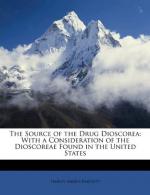|
This section contains 263 words (approx. 1 page at 300 words per page) |
Second only to potatoes in terms of world tuber production, true yams (genus Dioscorea) are more closely related to tulips (both are monocots) than to the sweet potato (Ipomoea batatas), which is also often called a yam. The genus Dioscorea includes around eight hundred tuberous, annual species of twining or rambling habit, mostly found in tropical regions.
Cultivated for their starch-rich tubers, true yams were originally domesticated in three independent regions: Africa, Asia, and the New World. Today, yams, especially D. rotundata, are grown extensively throughout the tropics.
A number of Dioscorea species naturally produce saponins (a type of steroid). The most useful of these compounds, diosgenin, is very similar to the human sex hormones estrogen, progesterone, and testosterone. Present in the tubers at concentrations of up to 40 percent of its steroidal contents, Dioscorea represents a valuable source of diosgenin that is used to synthesize human sex hormones at low cost. This led to the development of the female contraceptive pill, which continues to be one of the most effective and widely used methods of birth control.
In 1952 researchers discovered that the fungus Rhizopus can convert diosgenin into the steroid cortisone, a human hormone. Along with hydrocortisone (also produced from diosgenin), cortisone plays an important role in medicine, particularly in the treatment of allergic reactions (such as those produced by insect bites and stings), and for reducing inflammation of the joints in patients suffering from arthritis.
See Also
Economic Importance of Plants; Lipids; Medicinal Plants; Monocots.
Bibliography
Simpson, Beryl B., and Molly C. Ogorzaly. Economic Botany: Plants in Our World. New York: McGraw-Hill, 1986.
|
This section contains 263 words (approx. 1 page at 300 words per page) |


